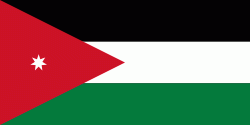Umm Qais (Umm Qays)
Umm Qais or Qays (أم قيس) is a town in northern Jordan principally known for its proximity to the ruins of the ancient Gadara. It is the largest city in the Bani Kinanah Department and Irbid Governorate in the extreme northwest of the country, near Jordan's borders with Israel and Syria. Today, the site is divided into three main areas: the archaeological site (Gadara), the traditional village (Umm Qais), and the modern town of Umm Qais.
Umm Qais is located 28 km north of Irbid and 120 km north of Amman. It expanded from the ruins of ancient Gadara, which are located on a ridge 378 m above sea level, overlooking the Sea of Tiberias, the Golan Heights, and the Yarmouk River gorge. Strategically central and located close to multiple water sources, Umm Qais has historically attracted a high level of interest.
Umm Qais is located 28 km north of Irbid and 120 km north of Amman. It expanded from the ruins of ancient Gadara, which are located on a ridge 378 m above sea level, overlooking the Sea of Tiberias, the Golan Heights, and the Yarmouk River gorge. Strategically central and located close to multiple water sources, Umm Qais has historically attracted a high level of interest.
Map - Umm Qais (Umm Qays)
Map
Country - Jordan
 |
 |
| Flag of Jordan | |
Modern-day Jordan has been inhabited by humans since the Paleolithic period. Three stable kingdoms emerged there at the end of the Bronze Age: Ammon, Moab and Edom. In the third century BC, the Arab Nabataeans established their Kingdom with Petra as the capital. Later rulers of the Transjordan region include the Assyrian, Babylonian, Roman, Byzantine, Rashidun, Umayyad, Abbasid, and the Ottoman empires. After the Great Arab Revolt against the Ottomans in 1916 during World War I, the Greater Syria region was partitioned by Britain and France. The Emirate of Transjordan was established in 1921 by the Hashemite, then Emir, Abdullah I, and the emirate became a British protectorate. In 1946, Jordan gained independence and became officially known in Arabic as the Hashemite Kingdom of Jordan. The country captured the West Bank during the 1948 Arab–Israeli War and annexed it until it was lost to Israel in 1967. Jordan renounced its claim to the territory in 1988, and became the second Arab state to sign a peace treaty with Israel in 1994.
Currency / Language
| ISO | Currency | Symbol | Significant figures |
|---|---|---|---|
| JOD | Jordanian dinar | دا | 3 |
| ISO | Language |
|---|---|
| AR | Arabic language |
| EN | English language |















